Patek Philippe Nautilus vs. AP Royal Oak: A Battle of Icons
In the realm of luxury watchmaking, few comparisons capture the imagination like the Audemars Piguet Royal Oak and Patek Philippe Nautilus. These iconic timepieces, both designed by Gerald Genta, revolutionized the concept of luxury sports watches. The Royal Oak pioneered the category in 1972, while the Nautilus refined it in 1976. Together, they represent the pinnacle of haute horlogerie combined with sporty elegance.
Origins of Two Icons

The AP Royal Oak and Patek Nautilus represent watershed moments in luxury watchmaking, each marking a bold departure from traditional timepiece design. These revolutionary watches challenged the notion that precious metals were essential for luxury timepieces, introducing stainless steel as a prestigious material. Their shared DNA through designer Gerald Genta created a unique historical connection that continues to fascinate collectors and enthusiasts worldwide.
The Birth of the Audemars Piguet Royal Oak
Throughout Audemars Piguet history, few moments proved as revolutionary as the decision to launch a high-end steel sports watch in an era dominated by precious metals. The Royal Oak emerged from a daring overnight design session by Gerald Genta, who drew inspiration from vintage diving helmets to create the iconic octagonal bezel secured by eight hexagonal screws.
The watch's introduction price of 3,650 Swiss francs - more expensive than a gold Patek Philippe at the time - challenged market conventions and initially faced skepticism. However, the bold pricing strategy ultimately succeeded in positioning the Royal Oak as a true luxury product, despite its steel construction. The combination of industrial materials with haute horlogerie finishing created an entirely new market segment.
The distinctive "tapisserie" dial pattern, integrated bracelet, and angular case design established a new design language that would influence watchmaking for decades. These revolutionary elements transformed the Royal Oak from a controversial debut into an icon of modern horology, proving that innovative design and exceptional craftsmanship could transcend traditional notions of luxury materials.
The Genesis of the Patek Philippe Nautilus
The Nautilus emerged in 1976 as an unexpected chapter in Patek Philippe history, marking the brand's response to the changing luxury watch landscape. Gerald Genta drew inspiration from maritime portholes, incorporating elements like the distinctive "ears" on either side of the case, reminiscent of transatlantic ocean liner windows. This nautical influence created a sophisticated timepiece that maintained Patek's reputation for understated excellence.
The watch's introduction represented a significant departure for Patek Philippe, known primarily for elegant dress watches and complicated timepieces. The decision to enter the luxury sports watch category demonstrated remarkable foresight, as the Nautilus would become one of the most coveted watches in the world. Its design balanced sportiness with refinement in a way that perfectly complemented Patek's existing collections.
The horizontal embossed dial pattern, with its subtle gradient effect and ability to catch light dramatically, became another hallmark of the collection. Combined with the rounded octagonal bezel and integrated bracelet, these elements created a timepiece that perfectly balanced sporty functionality with sophisticated elegance, establishing a new benchmark in luxury sports watch design.
Design and Aesthetics
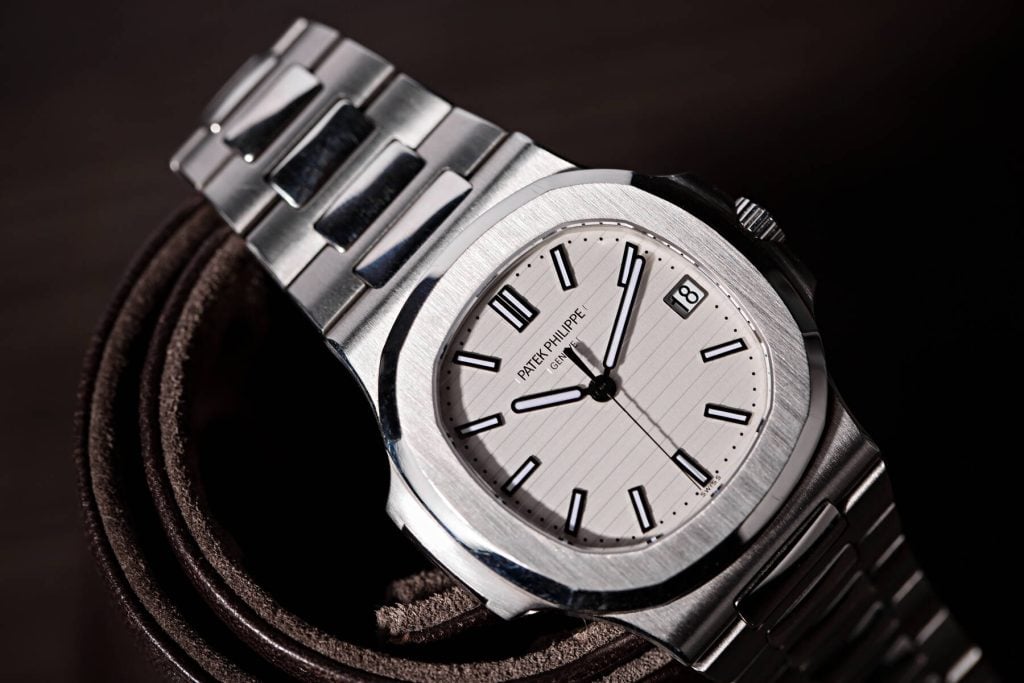
When examining these horological masterpieces side by side, their distinct design philosophies become apparent. While both watches emerged from Gerald Genta's creative genius, each expresses its maker's unique approach to luxury sports watch design. The Royal Oak boldly embraces industrial elements and geometric precision, while the Nautilus takes a more fluid, organic approach to similar design themes.
Audemars Piguet Royal Oak Design Language
The Royal Oak showcases a commanding presence through its distinctive geometric forms and industrial-inspired elements. Available in various sizes from 34mm to 44mm, AP demonstrates their mastery of materials ranging from stainless steel to ceramic and precious metals. The collection's evolution has introduced numerous variations while maintaining the core design elements that made it revolutionary.
The iconic octagonal bezel with its exposed screws creates an architectural presence that demands attention. The sharp angles and faceted surfaces interact dramatically with light, while the integrated bracelet's alternating brushed and polished links enhance its technical appearance. This distinctive combination of finishing techniques demonstrates AP's commitment to innovation in both design and execution.
The signature "tapisserie" dial pattern adds remarkable depth and visual interest, while recent variations explore new finishing techniques and complications. These design elements particularly appeal to collectors who appreciate bold, avant-garde aesthetics combined with traditional craftsmanship. The Royal Oak's design language continues to influence modern watch design while remaining distinctively its own.
Patek Philippe Nautilus Design Philosophy
The Nautilus presents a more subtle interpretation of the luxury sports watch concept. Its softer lines and gently curved case edges create an elegant profile that slides easily under a cuff while maintaining a strong wrist presence. The collection's design evolution has focused on refinement rather than revolution, staying true to its original sophisticated character.
The horizontal dial embossing and graduated color schemes add sophistication without ostentation. The case construction, inspired by maritime portholes, integrates seamlessly with the bracelet to create a fluid, organic appearance that distinguishes it from its more angular contemporaries. This cohesive design approach emphasizes Patek's commitment to timeless elegance.
The attention to detail shines through in perfectly proportioned case sizes and meticulously finished surfaces. These elements combine to create a watch that appeals to traditionalists who value understated luxury and versatile elegance. The Nautilus design philosophy exemplifies Patek's approach to luxury: refined, sophisticated, and eternally relevant.
Movements and Technical Excellence
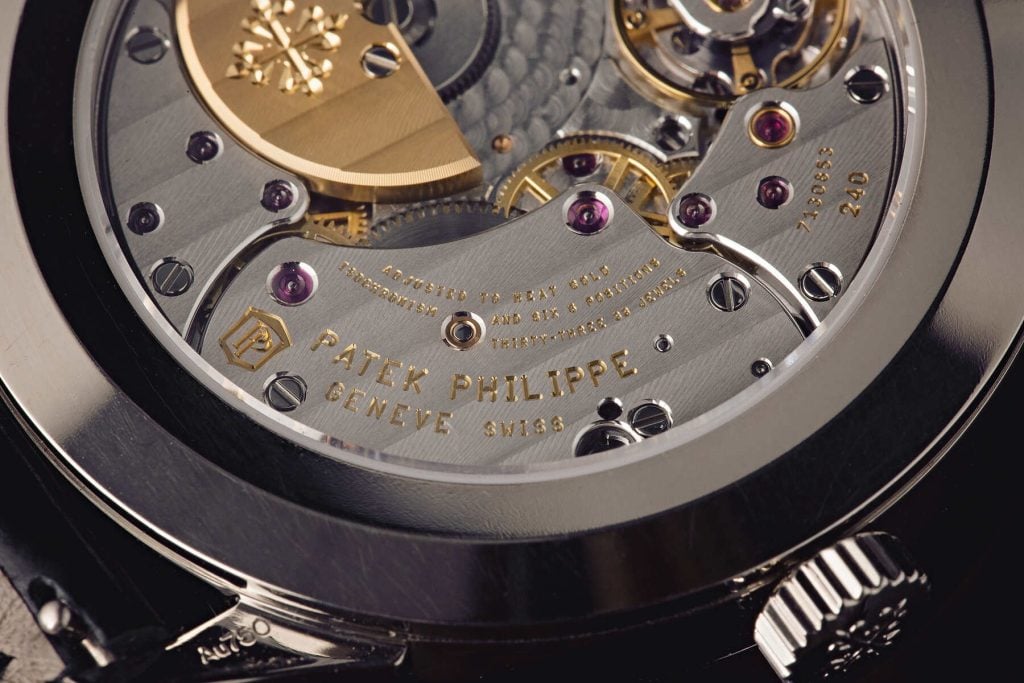
The mechanical expertise of both manufacturers shines through their in-house movements, each reflecting different approaches to horological excellence. While AP embraces innovation alongside tradition, Patek maintains a more classical approach to movement design and finishing. Both achieve exceptional results through their distinct philosophies.
Audemars Piguet Royal Oak Movements
AP's in-house calibers showcase exceptional finishing and innovative design. Each movement receives meticulous attention, from the industrial-inspired aesthetics of bridges and plates to the artistically decorated rotors visible through sapphire casebacks. The brand's expertise spans from ultra-thin automatics to highly complicated mechanisms, each maintaining the collection's sporty character.
The Royal Oak collection features some of watchmaking's most impressive complications, particularly in the Offshore line. The integration of chronographs, perpetual calendars, and tourbillons demonstrates AP's technical prowess while maintaining the sporty essence that defines the collection. These movements represent a perfect balance of traditional craftsmanship and modern innovation.
Patek Philippe Nautilus Movements
The pinnacle of traditional Swiss watchmaking engineering can be found in Patek Philippe's movements, which set standards for mechanical excellence. The Caliber 324 SC, found in many Nautilus models, exemplifies the brand's focus on precision and reliability through classical construction methods. Every component receives extensive hand-finishing, reflecting Patek's commitment to maintaining traditional horological standards.
Their dedication to refinement extends to every component, with hand-polished teeth on all wheels and pinions. Even simple time-only movements receive the same attention to detail as their most complicated calibers, demonstrating Patek's uncompromising approach to quality. This consistency in execution has helped establish the Nautilus as a benchmark for luxury sports watches.
Price and Value

The market dynamics surrounding these timepieces reflect their status as two of the most desirable watches in the world. Understanding their value proposition requires examining both retail pricing structures and the vibrant secondary market that has developed around them. Investment potential and market trends continue to evolve as demand intensifies.
Audemars Piguet Royal Oak Pricing
The Royal Oak's retail prices begin around $25,000 for steel models and can exceed $500,000 for complicated pieces in precious metals. Market demand has driven secondary prices significantly higher, particularly for certain discontinued models. The collection's diverse range offers various entry points for collectors while maintaining strong value retention across all segments.
The collection's value appreciation reflects growing global recognition of its historical importance and design innovation. Limited production numbers and strong demand have created a robust market for both vintage and contemporary pieces. The increasing difficulty in obtaining new pieces at retail has further strengthened the secondary market performance.
Steel models, particularly the 15202ST "Jumbo," have shown remarkable value retention and appreciation. The increasing difficulty in obtaining new pieces at retail has further strengthened the secondary market. Collector interest focuses particularly on special editions and early examples, with rare dial variants commanding significant premiums.
The Royal Oak's position as the original luxury sports watch continues to drive strong market performance. The combination of limited availability, growing global demand, and increasing recognition of its historical significance suggests continued strength in both retail and secondary market values. Strategic model discontinuations have further enhanced collectibility.
Patek Philippe Nautilus Pricing
The Nautilus commands some of the highest premiums in the luxury watch market. Retail prices start around $35,000 but rarely reflect actual transaction values due to extreme scarcity and demand. The disconnect between retail and market prices highlights the intense collector interest in these pieces.
The discontinuation of the legendary reference 5711 sparked unprecedented price increases, with some examples trading for multiples of their retail price. This phenomenon demonstrated the intense collector demand for Patek Philippe sports watches. The market response reinforced the Nautilus's position as perhaps the most sought-after luxury sports watch globally.
Market prices reflect both the watch's intrinsic value and its extreme scarcity. Limited annual production and Patek's strict allocation policies contribute to persistent supply shortages. This careful control of availability helps maintain the collection's exclusivity and desirability among collectors worldwide.
Investment potential remains strong, supported by Patek's reputation and the Nautilus's iconic status. Historical price appreciation suggests continued strong performance for well-maintained examples. The combination of limited production, growing global wealth, and increasing collector sophistication supports long-term value preservation.
Cultural and Celebrity Influence
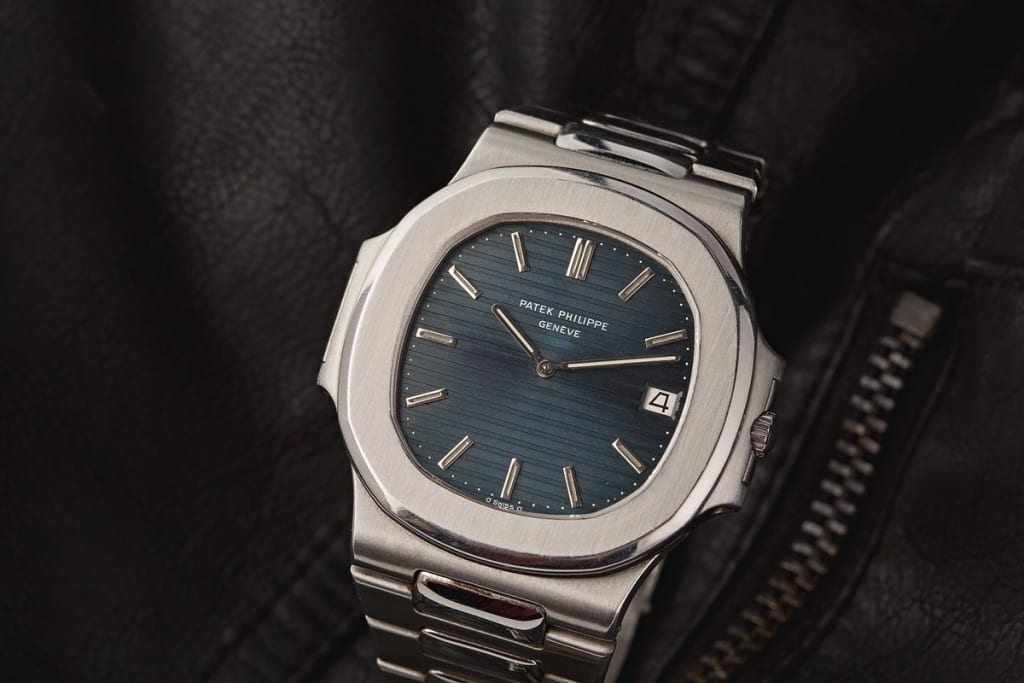
Both collections have transcended their roles as timepieces to become powerful cultural symbols, each representing different aspects of success and sophistication. Their influence extends beyond traditional watch collecting circles into broader popular culture, where they serve as recognizable markers of achievement and taste.
The Royal Oak in Pop Culture
The Royal Oak has become synonymous with bold luxury and innovation in popular culture. Its distinctive design makes frequent appearances in music videos, films, and social media, often associated with achievement in creative and entrepreneurial spheres. The watch's strong visual identity has made it instantly recognizable across various media platforms.
The collection's diversity appeals to athletes, musicians, and business leaders who appreciate its combination of sporty functionality and luxury credentials. Its presence in popular culture has helped establish it as a symbol of contemporary success, particularly among younger collectors and enthusiasts who value its bold design ethos.
The Nautilus as a Status Symbol
The Nautilus represents the pinnacle of understated luxury, often chosen by individuals who prefer discretion while still signaling their discerning taste. Its scarcity has enhanced its status as the ultimate "stealth wealth" timepiece. The watch's subtle design and prestigious heritage make it particularly appealing to traditional professionals and collectors.
Cultural moments featuring the Nautilus often emphasize its connection to legacy and enduring value rather than trendy appeal. Corporate leaders and established collectors particularly appreciate its refined aesthetic and heritage. The watch's reputation for exclusivity and understated elegance continues to grow with each passing year.
Buyer Considerations
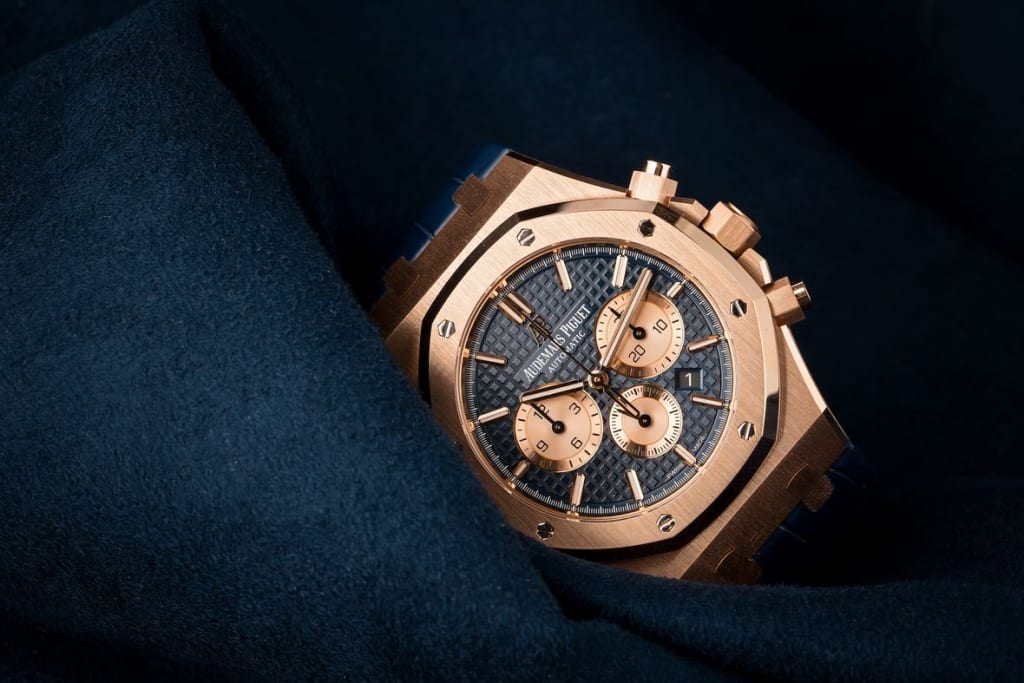
The decision between a Royal Oak and Nautilus represents more than a simple choice between two luxury timepieces. Each watch carries distinct heritage, design language, and collecting implications that warrant careful consideration. Understanding your specific needs, preferences, and long-term collecting goals becomes crucial in making an informed decision between these horological masterpieces.
Choosing the Royal Oak
Consistently ranked among the best Audemars Piguet watches ever produced, the Royal Oak presents an ideal choice for collectors drawn to revolutionary design and technical innovation. Its octagonal bezel, exposed screws, and integrated bracelet create an unmistakable presence that commands attention. The collection spans from simple time-only models to advanced complications, offering various entry points while maintaining the distinctive Royal Oak DNA throughout the range.
The watch's robust construction and water resistance make it suitable for active lifestyles, while its refined finishing ensures appropriateness in formal settings. The tapisserie dial pattern and architectural case design reflect AP's mastery of both technical innovation and aesthetic excellence. For a detailed breakdown of specs and current market values, see our in-depth Audemars Piguet Royal Oak review. This versatility has helped establish the Royal Oak as a true icon in modern horology.
Special editions and limited releases provide excellent opportunities for collection expansion, while the diverse size range ensures perfect fit for any wrist. The Royal Oak's historical significance as the original luxury sports watch adds substantial collecting appeal, while strong market performance provides confidence in long-term value retention.
The collection's ongoing evolution through new materials, complications, and design variations maintains strong collector interest. AP's commitment to innovation while preserving core design elements ensures each piece remains distinctively Royal Oak while pushing boundaries in contemporary watchmaking.
Choosing the Nautilus
Widely regarded as one of the best Patek Philippe watches ever created, the Nautilus represents the pinnacle of refined luxury sports watch design. Its porthole-inspired case and integrated bracelet create an elegant profile that epitomizes sophisticated versatility. The collection's focused range emphasizes perfection of core designs rather than constant variation, appealing to collectors who appreciate traditional excellence.
Current market conditions demand considerable patience when pursuing new models, with waiting lists extending several years for most variants. For detailed market analysis and comprehensive specifications, explore our Patek Philippe Nautilus review. However, this scarcity helps maintain exceptional value retention and enhances long-term collecting appeal. The Nautilus particularly suits collectors who appreciate understated sophistication.
The collection's limited but carefully curated range demonstrates Patek's commitment to perfection over proliferation. Each reference receives meticulous attention to detail, from case finishing to movement decoration. This focused approach results in timepieces that represent the absolute pinnacle of watchmaking craft.
The Nautilus embodies Patek's philosophy of creating watches that transcend generations. Its timeless design and impeccable execution make it particularly appealing to collectors who value heritage and long-term perspective in their acquisitions. The watch's prestigious reputation and limited availability ensure its position as a blue-chip collecting opportunity.
Royal Oak vs Nautilus: Final Verdict
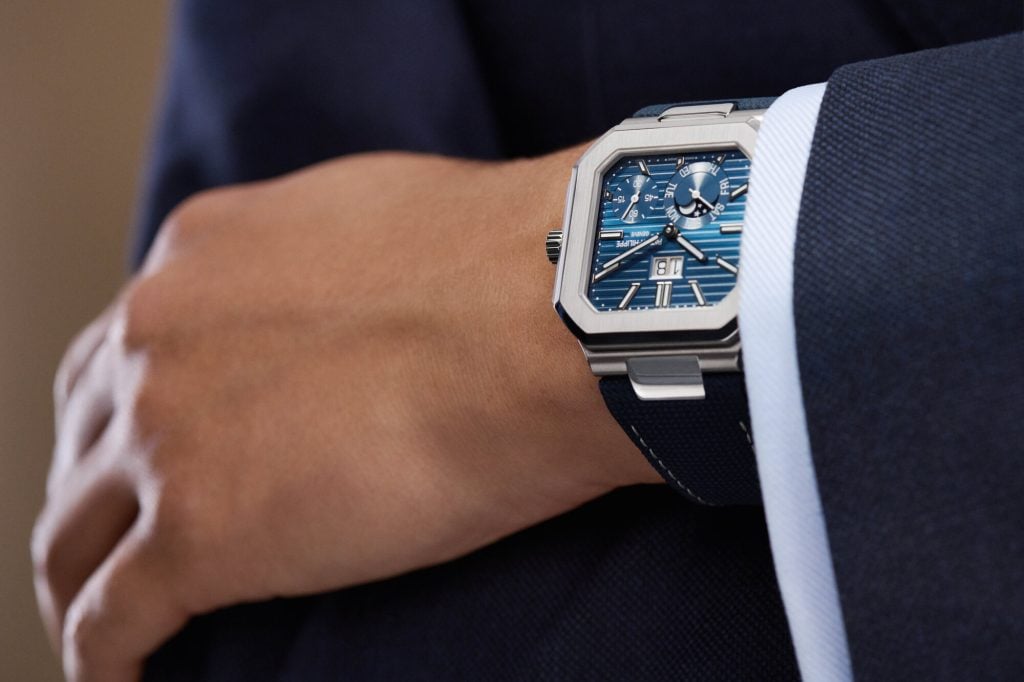
These horological masterpieces showcase different interpretations of the luxury sports watch concept. The Royal Oak's bold geometry and technical innovation contrast with the Nautilus's refined elegance and classical execution. Each represents the pinnacle of watchmaking while maintaining distinct identities.
Personal style preferences and collecting goals should guide your choice between them. The Royal Oak offers more variety and a stronger presence, while the Nautilus represents the ultimate in refined luxury sports watch design. For a broader understanding of how these prestigious maisons compare, explore our in-depth Audemars Piguet vs Patek Philippe analysis. Both watches excel in their respective approaches to combining sportiness with sophistication.
Both collections continue to appreciate in value, supported by strong collector demand and limited production. Their positions as blue-chip investments in the watch market appear secure for the foreseeable future, making either choice a sound decision from both collecting and investment perspectives.
For those seeking luxury watches for sale, Bob's Watches offers authenticated examples of both collections, providing a trusted path to ownership of these legendary timepieces. Whether you choose the bold presence of the Royal Oak or the refined elegance of the Nautilus, you'll be acquiring a watch that represents the pinnacle of luxury sports watch design.
With over two decades of experience in the luxury watch industry, the Bob's Watches Editorial Team stands at the forefront of watch expertise and insight. Our team, composed of seasoned watch enthusiasts, skilled horologists, and knowledgeable industry insiders, is dedicated to bringing you the latest and most accurate information in the world of luxury timepieces. We pride ourselves on our meticulous attention to detail and our unwavering commitment to authenticity. Our editorial content is a reflection of our passion for luxury watches and our dedication to providing our readers with comprehensive, unbiased, and up-to-date information. Our expertise spans a wide range of topics, including in-depth reviews of the latest models, historical retrospectives of iconic timepieces, and insightful analyses of market trends. We are also renowned for our detailed guides on watch maintenance and investment advice, making us a trusted resource for both seasoned collectors and new enthusiasts alike. As thought leaders in the watch industry, we understand the importance of staying ahead of the curve. That's why we continually update our knowledge and skills, ensuring that our readers receive the most current and relevant information. Whether you're seeking advice on your next luxury watch purchase or looking to deepen your understanding of watch craftsmanship, the Bob's Watches Editorial Team is here to guide you.